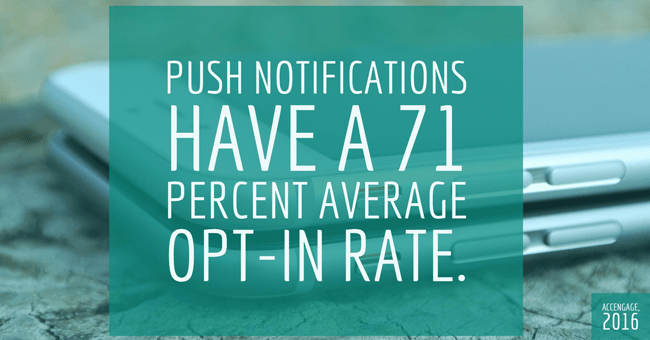Mobilizing the Ecommerce Environment with a Branded App

Remember Rolando - one of the original, premier iPhone games existing in the App Store when it officially launched in 2008? Back then, mobile apps were few and far between, and extremely limited in terms of capabilities.
Today, the Apple and Google Play Stores are pumping out hundreds of new apps every single day, many of which have a critical role in driving ecommerce sales for brands. In addition to allowing consumers to interact with organizations through a much more convenient platform, brands now have the ability to constantly stay in front of their target audience when it matters most.
Compuware recently released data reporting that 85 percent of consumers favor apps over mobile websites. So, what does this mean? Mobile apps clearly play a critical role in the shopping process, as they offer a higher level of convenience, and are faster and easier to browse. Additionally, it was noted that during Thanksgiving 2016, mobile shopping led to a record $771 million in revenue, showing the significant impact such devices and apps play on brands' bottom lines. It's time to dive deeper into this unique approach.
Below are a few benefits that mobile apps provide for the ecommerce environment.
Moving Consumers Through the Sales Funnel
It happens all too often that consumers enter a brick-and-mortar store, check out a few items, and then walk out without buying anything. While online stores are somewhat remediating this issue by allowing shoppers to revisit the item after giving them some more thought from the convenience of their sofa, bounce rates are still averaging up to 70 percent.
Branded mobile apps provide an entirely unique sales channel, as organizations can continuously engage with consumers as they go throughout their daily lives. According to new research, push notifications have a 71 percent average opt-in rate, meaning that brands can stay in front of nearly three in every four shoppers through targeted messages at any time they please. In the event that a customer adds an item to a virtual shopping cart on a website and leaves without making the purchase, a well-timed mobile message could be the difference between converting the sale and losing it altogether.

Convenience
Perhaps the most important component to the mobile application market is convenience. Satisfying consumer demand is a never-ending battle that heavily revolves around the convenience that a company provides. Through well-designed mobile apps, retailers are able to (hopefully) provide a one-touch shopping experience, while reaching consumers at any point during the day.
When utilizing a mobile app to boost sales, it's important to remember that it must enhance the customer experience. Otherwise, what's the point of having it as an alternative to a website? Making the experience more convenient will not only help lead to increased conversion rates, but also improve customer retention. Some of the biggest mobile app killers include slow loading time and a cumbersome check-out process. When designing and tweaking your mobile app, try to place yourself in the customer's shoes and ask yourself if it's improving their overall shopping experience.
Omnichannel Retailing
Brick-and-mortar stores no longer dominate the retail industry - the path to purchase is heavily impacted by mobile commerce. Consumers are utilizing a variety of channels to ultimately come to a purchase decision. Today, the buyer's journey could begin with an in-store visit and end with a mobile buy.
For example, in the home furnishing industry, homeowners have typically preferred to shop in-store. However, while physical showrooms provide various advantages over mobile and online shopping, they don't allow consumers to truly visualize how pieces will look and scale in their homes pre-purchase. Mobile apps now exist where retailers can partner with augmented and virtual reality companies to virtualize their product catalogues so consumers can virtually incorporate furniture into their rooms through 3-D technology - retailers like Houzz, Wayfair and West Elm are already exploring this. Pinterest is also laying the groundwork for product visualization.
Once they actually see how a product looks in their home, they are then able to purchase the item directly through the app. In this instance, their shopping journey may begin in store, but ends via a mobile device.
No "channel" works independently from one another; they all build upon each other to deliver the best possible customer experience. However, knowing which to optimize - be it the app, website or physical store - will set a company apart from its competitors.
Embracing the On-the-Go Society
With the versatility of mobile apps in today's technologically-advanced environment, retailers should be optimizing their platforms to provide unique, convenient services for their customers. It's important to remember that mobile apps should bolster the shopping experience, not detract from it, so fine tuning them to provide the highest-level of service is of utmost importance. We live in an "on-the-go" society, and those that are able to embrace this instead of fighting it will reap the greatest benefits.







